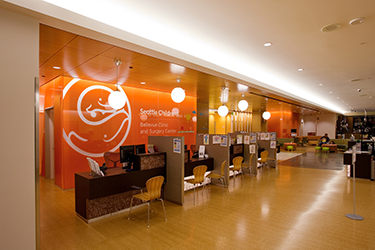|
Subscribe / Renew |
|
|
Contact Us |
|
| ► Subscribe to our Free Weekly Newsletter | |
| home | Welcome, sign in or click here to subscribe. | login |
Architecture & Engineering
| |
 |
October 3, 2019
Which project delivery methods work best?
PCS Structural Solutions

Collins
|

Hendel
|
For decades, teams in the AEC industry have been working to put a dent in the productivity problem.
The post-1960s industry drive, which McKinsey & Co. calls “the construction productivity imperative,” has created a pressure cooker of alternative processes and delivery methods seeking to move the needle. Alternative delivery methods have been worked and reworked — an alphabet soup of organizational models navigating partners toward positive outcomes.
The first integrated project delivery project, for example, was completed in the United States in 2005. Lean construction principles took on lagging efficiency and building-information modeling (BIM) enabled rapid information sharing among multiple partners. Collaboration broke down silos, and teams began to collectively tackle inefficiencies.
As structural engineers working throughout AEC markets, we must dial in to the unique needs and challenges of our clients. It’s a constant examination of fundamental questions: What practices should we bring to best serve our teams? And in this scramble for productivity, which ideas work?
Drivers in today’s markets
Today, a shortage of skilled labor and a large quantity of existing buildings that need upgrades or replacements drive development of public projects. In addition, sustainable design takes a prominent role in educational environments. In the private market, the feasibility stage is expedited, and owners require sophisticated information up front to make decisions.
Health care entities face the challenges of navigating a shifting political landscape and an aging demographic and infrastructure. Providers are scrambling to deliver care in appropriate locations. Project teams must offer proactive insights, cost-effective design and quick turnaround.
The integrated project delivery (IPD) legacy has had an interesting evolution. Anchoring the behaviors of the team in an IPD model is a multi-party, shared-risk/shared-reward contract, the purpose of which is to invest all parties in efficiency and success through collaboration.
University of Washington researchers Yong-Woo Kim and Carrie Dossick identify five elements that contribute to the integration of project delivery: “contract type IFOA (integrated form of agreement), culture, organization, lean construction and BIM.”
Although up-to-date metrics on the number of pure IPD projects (those using an IPD contract) are difficult to find, a July 2014 American Institute of Architects California report estimated at the time there were “over 200 projects that use multi-party contracts.”
While IPD hasn’t enjoyed broad success as a contractual delivery model, it continues to generate interest in the industry and has undoubtedly left a legacy informing the way AEC firms do business. IPD has evolved from its pure multi-contract form, and terms like IPD-lite or IPD-ish are commonly used to describe the philosophy without the shared risk/reward contract.
The IPD genes that flourish today are the concepts that support efficiency within market constraints, namely Lean design principles, collaboration and BIM, evidenced by the fact that these practices bring value across all delivery types.
Lean is rarely mentioned in the public market, although lean construction concepts — based on minimizing waste and maximizing value — have found their way into team structures. Likewise, private owners don’t talk about Lean explicitly, although key lean principles appear actively at play: team members are quick to identify value and are highly motivated to eliminate waste and improve processes. Because structural engineers are pulled in about the same time regardless of the delivery type, PCS Structural Solutions has found opportunities to bring lean principles to the table like pull planning and BIM.
Collaboration is highly valued across markets and provides partners the best opportunity to impact cost. Complex or specialized structures or sites require rigorous collaboration to deliver the level of complexity that make the structure function. Increasingly, owners are selecting for teams who are highly collaborative — they know they get the best value from a team that can perform well together. The secret sauce is a unique combination of individuals who are able to challenge each other to find better solutions.
Alternative delivery
Alternative delivery methods, such as design-build and its variations, are gaining quickly. Design-build got a big push from a series of catastrophes and natural disasters in the early 2000s which required fast, efficient response. Design-build’s success seems to be in striking middle ground, allowing flexibility with regard to lean principles and owner needs.
According to Kristin Hill, director of education programs at Lean Construction Institute, “Design-build allows a high level of lean integration. It blows the doors off of what teams are able to accomplish — they can go as deep with implementing lean as they find possible.”
All 50 states have since adopted procurement laws that allow public projects to use design-build delivery.
Competitive bidding remains a fixture in public markets to provide public accountability. For instance, most of Tacoma Public School’s K-12 projects are using design-build delivery, and higher education is adopting alternative deliveries like GC/CM and design-build more frequently. These delivery models provide owners the resources that help them control costs and schedules while still delivering quality projects within the mandated bidding structure.
A negotiated bid process meets the needs of private owners who highly value qualifications and teamwork. Health care developers seem to be headed to middle ground with regard to delivery: GC/CM, GMP, negotiated bid and design-assist bid. Although health care entities differ in their preference, many work with contractors in a design-assist role to help with cost preparation. Bidding remains important to the health care owner because it allows the owner to secure resources as the project progresses.
Moving forward
Time will tell which alternative practices can prove nimble enough to weather changes and improve productivity in the AEC landscape. Delivery methods that allow flexibility and embrace integrative design principles continue to gain steam.
Lean construction principles remain highly relevant in an industry fixed on maximizing efficiencies and controlling time and costs. In an industry historically slow to adopt technology, BIM is now standard, connecting teams and providing rapid information that help reduce project errors. Early collaboration among partners ensures critical decisions are made early in a project, reducing the cost of design changes.
Critical to that piece is how partners foster collaborative culture within their organizations. At PCS, we know that a collaborative culture is the key to allowing us to best navigate the AEC landscape with our partners and make an impact in the quality, productivity and legacy of our projects.
PCS Structural Solutions Principal Jason Collins is a leader in the private development market and champions visual communication. Valerie Hendel, a marketing assistant, enjoys examining the impact of collaborative structural engineering.
Other Stories:
- Why electric scooters could be a game changer for Seattle
- CLT: construction’s lean, green beauty queen
- The AEC industry has a data problem
- What our evolving mobility options mean for designers and developers
- New OSU-Cascades academic building will aim for net zero
- Mass timber is bringing the warmth of wood to the workplace
- With so many tech advances, why has AEC productivity growth stalled?
- Survey: Cary Kopczynski & Co.
- Survey: Weber Thompson
- Survey: Johnston Architects
- Survey: Bohlin Cywinski Jackson
- These 3 Northwest projects show how listening to clients pays off
- How understanding building codes can help you get more out of your project
- How successful workplaces offer more than just a place to work




